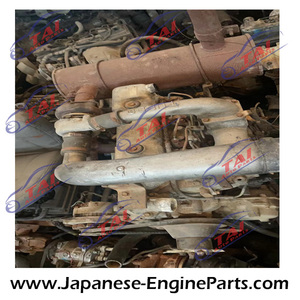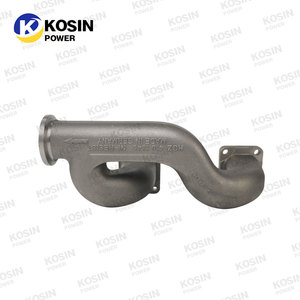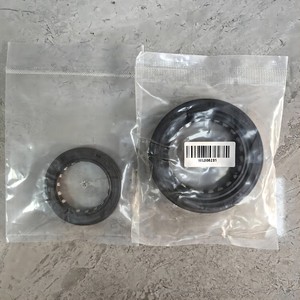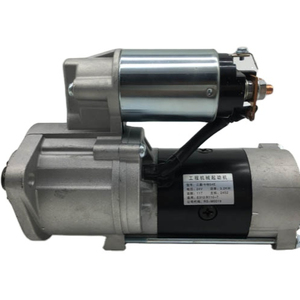(801 products available)


















































































































The 4DQ5 engine refers to an Isuzu 4- spill diesel engine with a 4DW5 engine code. It is a large-displacement diesel engine that powers heavier vehicles such as trucks and larger SUVs. Due to its large displacement, the engine provides strong load capacity and power, mainly for commercial and industrial applications. Its design to endure heavier use and demanding conditions makes it ideal as a workhorse in more rugged settings. The 4DQ5 engine exhibits notable performance and efficiency characteristics, making it a popular choice in various contexts.
Main model:
The 4DQ5 is typically featured in Isuzu's larger trucks and SUVs. For example, in certain models of the Isuzu large truck or commercial vehicle lineup. These applications take advantage of the 4DQ5's high displacement and torque, which are essential for transporting heavier loads. As a heavy-duty vehicle workhorse, it helps Isuzu tackle commercial and industrial transport needs.
Modification:
The modifications for the Isuzu 4DQ5 truck engine generally aim to boost power output, torque, and fuel efficiency even further. For example, making use of turbochargers or intercoolers to enhance the engine's breathing and combustion process, thereby increasing its power and torque. Direct injection technology is adopted in some modifications to help improve fuel utilization efficiency and lower emissions. Some variants may also focus on durability. Using heavy-duty materials, advanced manufacturing processes, etc., to extend the engine's service life under high-load and lengthy operations. These modified 4DQ5 truck engines are often employed in more demanding commercial transportation or industrial applications.
The 4DQ5 engine has the following core specific attributes.
Design configuration
It has a four-cylinder layout, with double overhead camshafts and four valves per cylinder. This means every single cylinder has two valves for intake and two for exhaust. The engine block is made of cast iron materials, while the cylinder head is also made of cast iron but with aluminum alloy.
Displacement
The engine's displacement is 2.5 liters or 2499 cc. Its large volume allows for high power and torque.
Power and torque output
The engine can produce 89 to 104 kilowatts of power or 120 to 140 horsepower. The torque range is between 172.5 to 198.5 Newton meters.
Fuel system
It uses a mechanical direct fuel injection system. This was a common fuel injection technology in the early years. It has a high compression ratio of 19 to 1, which allows users to maximize output and fuel economy.
Transmission and drive
The engine is mated to either a 5-speed manual transmission or a 4-speed automatic transmission. It is mainly a rear-wheel drive engine, but some models use a part-time four-wheel drive system.
The maintenance of 4DQ5 engines is similar to that of other diesel engines.
As a development project between Nissan and Toyota, the 4DQ5 engine mainly uses the Toyota power system technology. Due to its reasonable design and high-quality manufacturing process, it has been widely applied in various scenarios.
Application in construction machinery:
The main power source of excavators, loaders, and road rollers is the 4DQ5 engine. These engines are often matched with high-power output and torque to fulfill the needs of high workload and harsh operating environments. For instance, 4DQ5E diesel engines equipped with Hitachi ZX110W construction machinery can easily deal with the complex and varied working conditions in urban and rural areas.
Application in commercial vehicles:
4DQ5 engines are usually installed in some heavy-duty trucks, light-duty trucks, and buses. Their powerful power output and load-carrying capacity fulfill the demands of long-distance transportation and high-frequency logistics. For example, some models of Fuso trucks employ 4DQ5 engines as their main power source, providing stable performance and excellent fuel economy for the vehicles.
Application in special vehicles:
As the power system of some all-terrain vehicles, fire engines, and ambulances, the 4DQ5 engine possesses the characteristics of strong power, high dependability, and adaptability to various road conditions, thereby ensuring normal operation in various special working scenarios.
Application in passenger vehicles:
Some models of pickups and SUVs also adopt the 4DQ5 engine. Its power output meets the requirements of urban traffic and off-road besides ensuring good riding comfort and safety. For instance, the Mitsubishi Pajero Sport employs the 4DQ5 engine, endowing the vehicle with strong power output, high efficiency, and excellent fuel economy.
When choosing the Isuzu 4DQ5 engine for sale or any other Isuzu engine, a few factors to consider are the mode of the Isuzu truck or car, customer needs, the availability of the engine in the market, and the suppliers.
When selecting an engine, it's essential to know the car or truck it will be used in. Check if the engine is compatible with the existing vehicle system, including its physical fit, electronic controls, emission regulations, power requirements, and licensing.
It's essential to check whether the new engine will meet customer needs, such as those requiring heavy-duty performance or specific duty cycles like construction, distribution, or passenger transport. Choose the engine that aligns with the intended vehicle application to ensure its suitability for customers' requirements.
It is vital to determine if the 4DQ5 Isuzu engine will be mass-produced. If so, it will be better to look for competitive pricing to allow for resale and ensure profitability. In this case, it will be paramount to negotiate pricing, especially for bulk orders.
The suppliers' ability to deliver the product consistently is essential to maintaining stock. Evaluate the supplier's delivery schedule and capacity to provide the product in the required quantities and quality.
Working with a few specific or single suppliers can be beneficial, but it's also essential to diversify suppliers to ensure product availability and competitive pricing.
Q1: How does the 4DQ5 engine compare to newer diesel technologies?
A1: While the 4DQ5 is a trusted performer, some aspects show its age. Compared to modern diesels with common rail injection and four-valve per cylinder designs, the 4DQ5 lacks refinement. Its power and torque are lower. Newer diesels also produce less noise and soot. However, the 4DQ5's simplicity appeals to some users who prefer easy-to-fix engines.
Q2: What vehicles are still using the 4DQ5 engine?
A2: Isuzu phased out the 4DQ5 in most countries. However, some developing nations still use it in pick-ups, light trucks, and vans due to its reliability. Models like the Isuzu Elf and N-Series may still have the 4DQ5 chugging along in certain regions.
Q3: What problems should users look for with the 4DQ5?
A3: While durable, the 4DQ5 can have issues. The biggest concern is the crawler box, which can wear out from improper use. Other problems include cracked cylinder heads, leaks in the cooling system, and the fuel pump losing prime. While overhauls are possible, finding spare parts can be tricky.
Q4: Does the 4DQ5 have any eco-friendly features?
A4: Unfortunately, the 4DQ5 does not have any eco-friendly systems like EGR or particulate filters. Its simple design means fewer parts and complexity. However, this also means it lacks advanced emission controls, so it produces more pollutants than cleaner modern engines.
Q5: What maintenance does the 4DQ5 require?
A5: The good news is that the 4DQ5 has straightforward maintenance. Isuzu recommends oil changes every 5000 km or 6 months, with 15W-40 engine oil. The dry-type air filter should be cleaned at the same interval. Cooling system checks and greasing the injection pump and joints are also required.